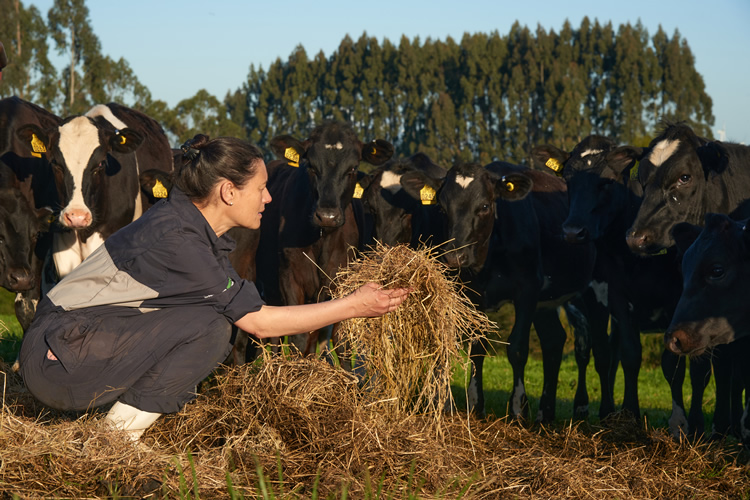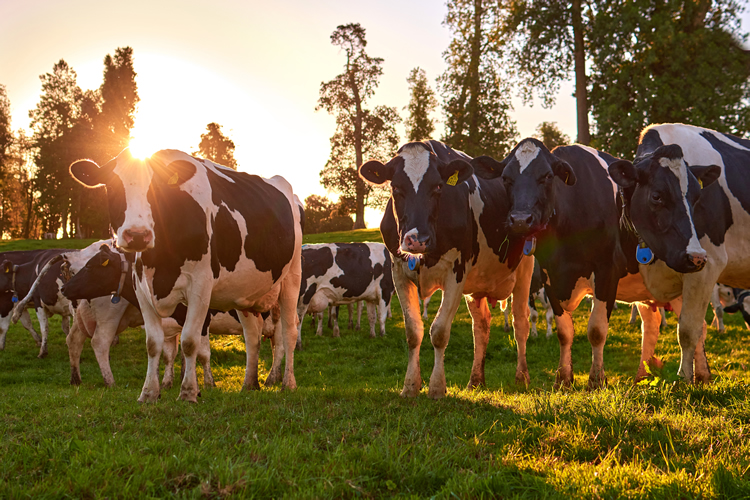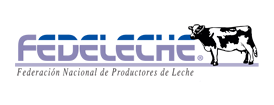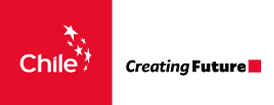Dairy farmers work day to day
to give one of the most complete foods that nature provides us.
Productores
Producers
To speak of milk is to speak of the greatest triumphs of humanity. Thanks to this remarkable food, we have managed, over time, to increase people's life expectancy, reduce mortality rates at an early age and, now, overcome child malnutrition.
In Chile and the Western world, talking about milk is even evoking the most tender memories of childhood and family warmth. Who hasn't been rewarded with semolina with milk? Who didn't ask for a spoonful of delicacy while mom cooked? Who hasn't hatched complicated plans to keep a jar of condensed milk from the pantry? Dairy products are part of our history and the development of the dairy activity has been a fundamental part of the modernization of our country.
At present, around 2,600 million liters of raw milk are produced in Chile each year. The producers of this noble food are located between the regions of Valparaíso, in the central part of the country, and the Los Lagos region, in the south of Chile, which is a traditional development activity in rural areas and a fundamental part of the modernization of the countryside.
The farms in the central zone are characterized, in general, by the stabling of cattle and cows with higher individual production. This system allows a more balanced production during the different seasons of the year.
Farms in the southern and central-southern zone - where 80% of production is concentrated - have a greater availability of pasture, so they base their cattle feed mainly on this resource. This leads to a greater supply in spring-summer.
Regardless of where raw milk is produced in Chile, it follows the same guidelines that guarantee an excellent quality, safe and innocuous healthy food.
The nearly 4 thousand raw milk producers represent the first link in the production chain of the national dairy industry, and have the availability of dairy cattle and the necessary technology for the extraction and first refrigeration of raw milk.




Early Years
When Spanish families arrived during the colonial period, small farms arose in which the existing animals provided the food that the family and its close nucleus required to survive.
Later, with the growth of the country's main cities, the need arose to offer families dairy products without having a cow in the house. Thus, small dairy enterprises began to emerge and, with the passage of time, saw their consolidation.
Milk producers are the starting point of the beautiful process that ends in the nutritious and healthy nutrition of millions of people in Chile and the world.
An important auxiliary industry has been generated around primary production, which provides economic support to thousands of families in Chile.
Historical Context
In the first half of the 19th century, an incipient agricultural and economic activity began.
As time went by, this agro-industrial experience grew in importance, especially with the arrival from Europe of new technologies for the industrialization of milk and the consolidation of emblematic dairies. These transformations, which led to the modernization of production methods, do not stop today.
In this context, the production of raw milk in Chile became an alternative for economic and social development, although investments were required to enable the Chilean countryside to improve its production techniques and to improve its infrastructure and communication routes in order to speed up access of the product to the markets of demand.
Exhibiting great entrepreneurial capacity, milk producers doubled their production between 1995 and 2010 to surpass the two billion liter barrier.


